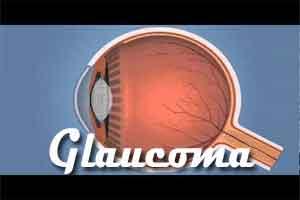- Home
- Editorial
- News
- Practice Guidelines
- Anesthesiology Guidelines
- Cancer Guidelines
- Cardiac Sciences Guidelines
- Critical Care Guidelines
- Dentistry Guidelines
- Dermatology Guidelines
- Diabetes and Endo Guidelines
- Diagnostics Guidelines
- ENT Guidelines
- Featured Practice Guidelines
- Gastroenterology Guidelines
- Geriatrics Guidelines
- Medicine Guidelines
- Nephrology Guidelines
- Neurosciences Guidelines
- Obs and Gynae Guidelines
- Ophthalmology Guidelines
- Orthopaedics Guidelines
- Paediatrics Guidelines
- Psychiatry Guidelines
- Pulmonology Guidelines
- Radiology Guidelines
- Surgery Guidelines
- Urology Guidelines
Gonioscopy must at first visit to diagnose Glaucoma with normal IOP

A new study published in the Journal of Glaucoma has suggested ophthalmologists perform gonioscopy on the initial evaluation of every patient as without gonioscopy clinicians may misdiagnose PACG as normal tension glaucoma.
The study revealed that if gonioscopy cannot be performed, either optical biometry or optical coherence tomography of the anterior chamber are useful adjuncts as sixty percent of patients with PACG had normal IOP at their first visit.
Won Hyuk Oh and associates performed a retrospective study to investigate the prevalence of normal intraocular pressure (IOP) at first visit among patients with primary angle closure glaucoma (PACG) and their ocular characteristics.
Read Also: Latanoprost- first line therapy for new Glaucoma cases
Based on the intraocular pressure the researchers divided PACG eyes into two groups: those with normal IOP and those with high IOP (>21mmHg) at the first visit. One hundred sixty eyes of 160 primary angle closure glaucoma patients were included. Sixty percent (97/160) of the patients had normal IOP at their first visit.
The investigators found that the PACG patients with initially normal IOP had significantly longer axial length and deeper “true” anterior chamber depth (ACD) than those with initially high IOP. Multiple logistic regression revealed that deeper “true” ACD and more hyperopic refractive errors were independent predictors of initially normal IOP in PACG eyes. The prevalence of disc hemorrhage was higher in PACG patients with initially normal IOP than in those with initially high IOP (29.9% vs. 14.3%).
Read Also: Study finds pillow as risk factor for Glaucoma
The study suggested that without gonioscopy clinicians may misdiagnose PACG as normal tension glaucoma. Anterior chamber depth measurement can aid the diagnosis of PACG because even PACG eyes with initially normal IOP have shallow ACD.
Primary angle closure (PAC) is defined as appositional or synechial closure of the anterior chamber angle which can lead to aqueous outflow obstruction and raised IOP, in the absence of glaucomatous optic neuropathy.
For full information log on to https://insights.ovid.com/crossref?an=00061198-900000000-98312

Disclaimer: This site is primarily intended for healthcare professionals. Any content/information on this website does not replace the advice of medical and/or health professionals and should not be construed as medical/diagnostic advice/endorsement or prescription. Use of this site is subject to our terms of use, privacy policy, advertisement policy. © 2020 Minerva Medical Treatment Pvt Ltd